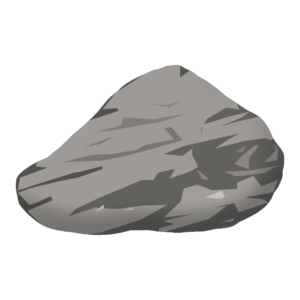The Downlink • Sep 30, 2022
A smashing success
Space Snapshot

On Sept. 27, NASA's DART spacecraft smashed into the asteroid moonlet Dimorphos to test a potential planetary defense technique. The Italian Space Agency's LICIACube spacecraft was nearby to capture this dramatic image of the immediate aftereffects of the impact. You can see debris flying off Dimorphos in all directions, with the larger asteroid Dydimos in the foreground. See more images from the asteroid impact, including footage taken by DART moments before impact. Image credit: ASI/NASA.
You love space, now take action
This weekly newsletter is your toolkit to learn more about space, share information with your friends and family, and take direct action to support exploration. Anyone can subscribe at planetary.org/connect to receive it as a weekly email.
Mission Briefings


Artemis I can’t catch a break. After several setbacks due to issues with the Space Launch System’s engine, the mission is now facing further delays because of Hurricane Ian. The rocket and the Orion capsule that sits atop it were both rolled back into Kennedy Space Center’s Vehicle Assembly Building this week to protect them from the storm. Pictured: The SLS at the entrance of the Vehicle Assembly Building when it was rolled out in March. Image credit: NASA/Kim Shiflett.

You could help name an exoplanet. The International Astronomical Union (IAU) has launched an international competition to name 20 exoplanets, including some of JWST’s first exoplanet targets. The IAU’s aim with this competition is also to spread awareness of exoplanet research; to compete in the naming challenge, teams also have to host an outreach event to teach the public about exoplanets. Learn more.
From The Planetary Society


Image processing is a bit like polishing cosmic jewels. The beauty is already there, but a little effort can help make it really shine. Judy Schmidt is one of these cosmic jewelers; she processes space image data to draw out the beauty (and science) that would otherwise be invisible to human eyes. Judy joins this week’s Planetary Radio to talk about her work. Plus, you’ll hear from DART Coordination Lead Nancy Chabot about the mission’s smashing success. Pictured: A large collage of planetary nebulas processed by Judy Schmidt. Image credit: NASA/ESA/Judy Schmidt.

JWST has found carbon dioxide in an exoplanet’s atmosphere, and this is big news. The space telescope’s discovery of CO2 in the atmosphere of a gas giant exoplanet may indicate that it will be able to detect molecules (rather than a single elements) in the atmospheres of terrestrial exoplanets, which has never been done before. This bodes well for the study of exoplanets, particularly those with Earth-like characteristics.

Even though Artemis I didn’t launch, its popularity captured attention. A recent article from the Tampa Bay Times explored the enormous public interest in rocket launches that was on display when thousands of people flocked to Florida to witness the launch that ended up being scrubbed. Planetary Society members were among those interviewed about their passion for space science and exploration.

The Planetary Society is heading into classrooms. Our lighthearted, kid-friendly Random Space Fact video series was recently picked up by Epic!, an online platform that shares e-books, videos, and other learning content with schools, libraries, and home-schoolers. The series is also available for free on our website’s kids section and YouTube channel.
What's Up

Jupiter is still extremely bright in the night sky, rising in the east at sunset and setting in the west at sunrise. Yellowish Saturn shines a bit higher in the sky. Mars rises a little later in the evening, shining bright with a reddish tint. Learn more about what to look for in October’s night skies.
Wow of the Week

Believe it or not, this is a real image from space. JWST captured this mesmerizing view of the galaxy IC 5332, which is located more than 29 million light-years from Earth, using its Mid-InfraRed Instrument. At a diameter of about 66,000 light-years, this dramatic, swirling galaxy is just a fraction of the size of the Milky Way, which is about 106,000 light-years in diameter. Image credit: ESA/Webb, NASA & CSA, J. Lee and the PHANGS-JWST and PHANGS-HST Teams.
Send us your artwork!
We love to feature space artwork in the Downlink. If you create any kind of space-related art, we invite you to send it to us by replying to any Downlink email or writing to [email protected]. Please let us know in your email if you’re a Planetary Society member!


 Explore Worlds
Explore Worlds Find Life
Find Life Defend Earth
Defend Earth


